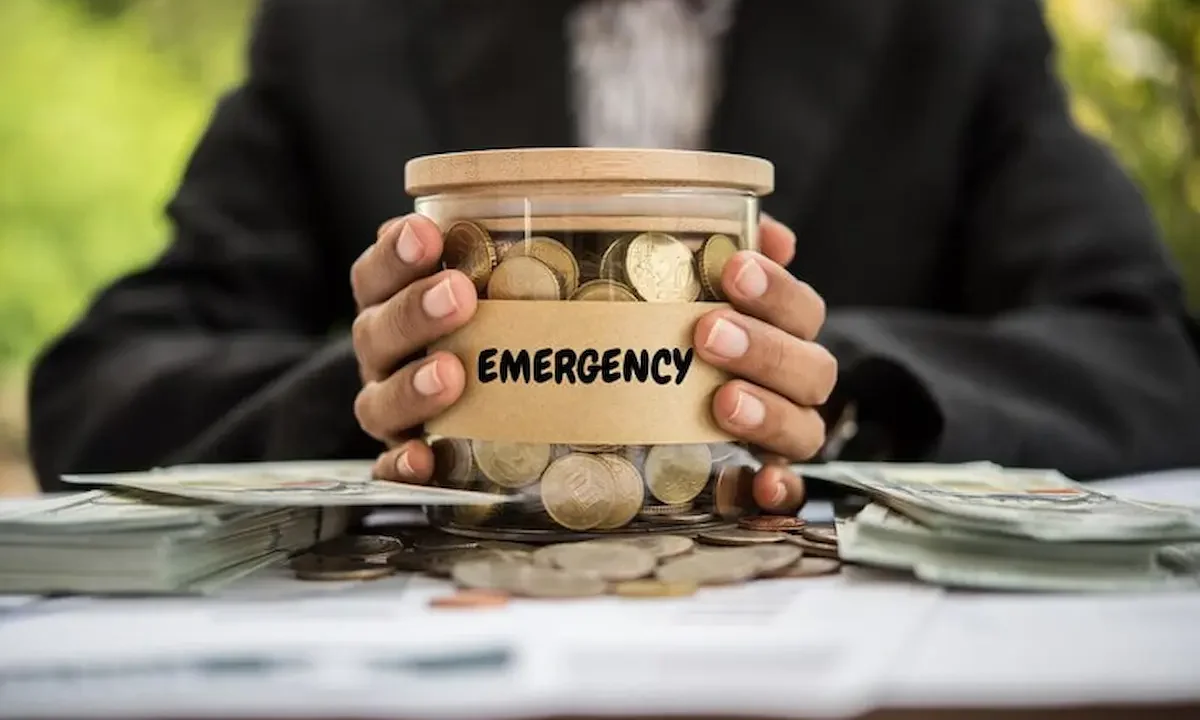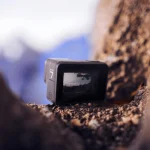- Home
- Finance & Side Hustles
- Recommended Emergency Fund Amo ...

Life is unpredictable—and that unpredictability often comes with a price tag. Whether it’s a sudden job loss, unexpected medical bills, or urgent car repairs, having a financial safety net can make all the difference. That’s where an emergency fund comes in.
But here’s the big question:
How much money should you really set aside in your emergency fund?
Financial experts in the United States often recommend saving three to six months’ worth of essential expenses, but the exact amount can vary depending on your lifestyle, income stability, and personal obligations. That’s why understanding the recommended emergency fund amount for your unique situation is crucial—especially in today’s economy where inflation and living costs continue to rise.
In this guide, we’ll break down:
- How much emergency fund you actually need
- How to calculate it based on your monthly expenses
- Where to keep it for easy access
- And simple, realistic steps to help you build your fund—even on a tight budget
Let’s build your financial peace of mind, one smart saving habit at a time.
What Is an Emergency Fund and Why Do You Need One?
An emergency fund is a dedicated amount of money set aside to cover unexpected expenses that aren’t part of your regular monthly budget. Think of it as your personal financial buffer—a cushion that protects you when life throws the unexpected your way.
In the U.S., where healthcare costs, rent, and job instability can cause significant financial stress, having an emergency fund isn’t just smart—it’s essential.
Common emergencies where an emergency fund helps:
- Sudden job loss or reduced income
- Unexpected medical or dental expenses
- Car breakdowns or urgent home repairs
- Emergency travel or family emergencies
- Pet emergencies or legal fees
Without a proper financial safety net, many Americans resort to high-interest credit cards or personal loans—leading to long-term debt traps. That’s why personal finance advisors recommend preparing in advance by creating a dedicated emergency fund that’s separate from your checking or daily savings accounts.
Did you know? According to a 2024 Federal Reserve report, nearly 37% of Americans say they would struggle to cover a $400 emergency expense without borrowing or selling something.
Building an emergency fund is one of the first steps toward financial independence, and it gives you peace of mind—knowing you’re protected, even when life gets unpredictable.
Recommended Emergency Fund Amount Based on Your Lifestyle
So, how much should you actually save in your emergency fund? While there’s no one-size-fits-all answer, most financial experts in the U.S. recommend saving 3 to 6 months’ worth of essential living expenses. This rule of thumb works as a baseline, but the exact emergency savings amount depends on your income type, lifestyle, and financial dependents.
Let’s break it down:
1. Single Individual with Stable Income
If you’re living alone and have a stable full-time job with benefits:
- Recommended emergency fund amount: 3 months of expenses
- Example: If your monthly expenses are $2,500 → save $7,500
- Why? Lower financial responsibilities and fewer dependents
2. Dual-Income Household (Married, No Kids)
- Recommended amount: 3–4 months of joint expenses
- If you both work and can support each other, your risk is lower
- Example: $4,000/month expenses → save $12,000–$16,000
3. Single-Income Family (With Kids)
- Recommended amount: 6 months of expenses or more
- Children, healthcare, and education increase unpredictability
- Example: $5,000/month → save at least $30,000
- Include: Rent/mortgage, food, insurance, transportation, daycare
4. Self-Employed or Freelancer
- Recommended amount: 6–12 months of expenses
- Variable income means higher financial risk during slow periods
- Tip: Track your average income and base your emergency fund on lean months
5. Retirees or Those on Fixed Income
- 3–6 months of non-discretionary expenses
- Focus on medical costs and essential bills
- Emergency fund helps avoid early withdrawal from retirement accounts
What Should You Include in Your Emergency Fund Calculation?
Only essential, recurring expenses, such as:
- Rent/mortgage
- Utilities and phone/internet
- Groceries
- Health insurance premiums
- Transportation
- Childcare or education loans
- Minimum debt payments
Tip: Don’t include gym memberships, streaming subscriptions, or dining out—your emergency fund should cover survival, not comfort.
Now that you know how much you should save, the next step is learning how to calculate and start building your emergency fund—even if you’re starting from $0.
How Much Emergency Fund Should I Have? (With Calculator)
You’ve probably heard it before:
“Save 3 to 6 months’ worth of expenses in your emergency fund.”
But what does that actually look like for your situation?
Let’s walk through how to calculate your recommended emergency fund amount step by step, using a simple method:
Step 1: Add Up Your Essential Monthly Expenses
Make a list of only must-pay items:
- Rent or mortgage: $1,200
- Groceries: $400
- Utilities & internet: $250
- Transportation (gas, car payment, etc.): $300
- Insurance (health, auto): $350
- Minimum debt payments: $200
- Childcare/school costs (if any): $300
Total Monthly Essentials = $3,000
Step 2: Multiply by 3 to 6 (Based on Your Risk Level)
| Life Situation | Recommended Multiplier |
|---|---|
| Stable job, dual income | ×3 months |
| Single income, moderate job security | ×4–5 months |
| Freelance/self-employed or with kids | ×6+ months |
Emergency Fund Goal = Monthly Essentials × 3 to 6
Try This: Free Emergency Fund Calculator
You can use an online tool like NerdWallet Emergency Fund Calculator (or similar U.S. tools) to get a personalized estimate in under 60 seconds.
Example Calculation:
Case: Single mother in Florida
- Monthly expenses = $3,200
- Single income household = Multiply by 6
- Emergency Fund Goal = $19,200
That’s the total you should aim to save over time—not overnight.
Remember: You don’t need to hit the full amount right away. Starting with just $500 to $1,000 as a mini-emergency fund is a powerful first step.
How to Build an Emergency Fund from Scratch
Starting an emergency fund from $0 might feel overwhelming—especially if you’re living paycheck to paycheck or managing debt. But the truth is, you don’t need a huge salary to build a financial safety net. What you need is consistency, a smart savings strategy, and patience.
Here’s how to start building your emergency savings amount—even on a tight budget in the U.S.:
Step 1: Set a Mini Emergency Fund Goal ($500–$1,000)
Before aiming for 3–6 months of expenses, start with a micro-goal.
This covers small, sudden costs like a car repair or medical co-pay.
Mini wins keep you motivated.
Step 2: Automate Your Savings
Set up automatic transfers from your checking account to a separate savings account—ideally right after payday.
Even $10–$25 per week adds up over time.
“Set it and forget it” helps you stay consistent.
Step 3: Use the 50/30/20 Budget Rule
This popular U.S. budgeting framework divides your income:
- 50% for needs
- 30% for wants
- 20% for savings and debt repayment
Try to allocate at least part of that 20% to your emergency fund.
Step 4: Cut Non-Essential Expenses
Skip small luxuries like:
- Takeout meals
- Streaming subscriptions
- Impulse purchases
Redirect those savings—$5 here, $20 there—straight into your fund.
Use a budget tracker app to monitor your progress.
Step 5: Use Windfalls Wisely
Tax refunds, cash gifts, bonuses, or side hustle income? Don’t spend it all.
Put at least 50% into your emergency fund.
Every lump sum gets you closer to your target.
Step 6: Track & Celebrate Progress
Keep a visual tracker or use apps like Mint or YNAB.
Reward yourself for hitting savings milestones: $500, $1,000, $5,000+
Fact: Studies show that people with even $1,000 in emergency savings are far more likely to avoid debt during unexpected events.
Best Places to Keep Your Emergency Fund
Once you’ve started building your emergency fund, it’s just as important to store it in the right place—where it’s safe, easily accessible, and earns a bit of interest. Your goal isn’t to grow the money aggressively, but to protect it and reach it quickly when needed.
Here are the best places to keep your emergency savings in the United States:
1. High-Yield Savings Account (HYSA)
- Offers better interest than regular savings accounts (often 4%+ in 2025)
- FDIC insured (up to $250,000)
- Quick and easy access via online/mobile banking
Best choice for most U.S. households
Example providers: Ally, Marcus by Goldman Sachs, Capital One
2. Money Market Account (MMA)
- Combines savings + limited check-writing ability
- Slightly higher interest than traditional savings
- Still FDIC insured
Ideal for those who want a balance between flexibility and growth
3. Cash Management Account (CMA)
- Offered by fintechs (e.g., Wealthfront, SoFi)
- Hybrid of checking + savings with high APY
- Usually FDIC-insured through partner banks
Best for tech-savvy savers with digital banking preference
4. Separate Savings Account at a Different Bank
- Prevents accidental spending
- Keeps emergency funds mentally separate from daily finances
Great for impulse-prone savers
Avoid These for Emergency Funds:
- Stocks or crypto – Too volatile; your savings could drop in value overnight
- CDs (Certificates of Deposit) – Money gets locked for months or years
- Physical cash at home – Risk of theft, loss, and no interest earned
Rule of Thumb: Your emergency fund should be 100% liquid, 100% safe, and 100% boring.
When to Use Your Emergency Fund (and When Not To)
Having an emergency fund is empowering—but using it wisely is just as important. Your emergency savings are meant to protect you during true financial disruptions, not convenience-based spending.
So, how do you know when it’s okay to dip into your emergency fund?
Appropriate Times to Use Your Emergency Fund:
1. Medical Emergencies
Unexpected ER visits, surgery co-pays, urgent prescriptions, or dental work that isn’t covered by insurance.
2. Job Loss or Income Cut
If you’ve been laid off, furloughed, or had hours reduced, your emergency fund helps you cover essentials while you find new work.
3. Urgent Car or Home Repairs
Think broken furnace in winter, car won’t start, or burst pipe—not upgrading your car stereo or painting your walls.
4. Family or Travel Emergencies
Unplanned but necessary trips—like attending a funeral, helping a sick parent, or legal matters that require travel.
5. Unexpected Pet Expenses
Vet emergencies, surgeries, or life-saving treatments for your pets.
Key Principle: If it affects your health, home, job, or security, it qualifies.
Things Not to Use Your Emergency Fund For:
1. Non-Essential Shopping
Clothing sales, gadgets, or holiday gifts—even if the price feels “too good to miss.”
2. Down Payments on a Car or Home
These are planned expenses. Create a separate “sinking fund” instead.
3. Vacations or Weddings
Fun, but not emergencies. Save for them separately.
4. Paying Off Credit Cards (Unless You’ve Lost Income)
You need to stop the bleeding first—use income or refinancing if possible.
What If You Use It?
Don’t stress! That’s what it’s there for.
But once you use your emergency fund, make a plan to rebuild it as soon as possible—even $50–$100 per month can go a long way.
Golden Rule:
Only touch your emergency fund when NOT doing so would cause a bigger financial problem.
FAQ: Recommended Emergency Fund Amount
How much emergency fund should I have?
Most U.S. financial experts recommend saving 3 to 6 months’ worth of essential living expenses. If your monthly expenses are $3,000, aim for $9,000 to $18,000 based on your job security and family size.
Is $5,000 enough for an emergency fund?
It depends. For someone with low expenses and no dependents, $5,000 may cover 2–3 months. But for families or self-employed individuals, it may not be enough. Always calculate based on your monthly needs.
Where is the best place to keep an emergency fund?
The best place is a high-yield savings account with FDIC insurance. It’s safe, earns interest, and offers quick access during emergencies. Avoid keeping it in cash or volatile investments like crypto.
Can I build an emergency fund with a low income?
Yes! Start small with $10–$25 per week, automate your savings, and cut back on non-essentials. Many people on tight budgets successfully build emergency funds over time with consistency.
What should I include when calculating emergency expenses?
Include only essential expenses like:
- Rent or mortgage
- Groceries
- Utilities
- Health insurance
- Transportation
- Childcare or debt minimums
Exclude things like dining out, entertainment, or vacation savings.
When should I use my emergency fund?
Use your emergency fund for:
- Medical emergencies
- Job loss
- Essential home/car repairs
- Urgent travel or family crises
Not for planned purchases, gifts, or non-urgent spending.
Should emergency funds be separate from other savings?
Yes. Keep it in a dedicated account to avoid mixing it with daily spending or long-term goals. Out of sight, out of mind—yet still accessible when needed.







